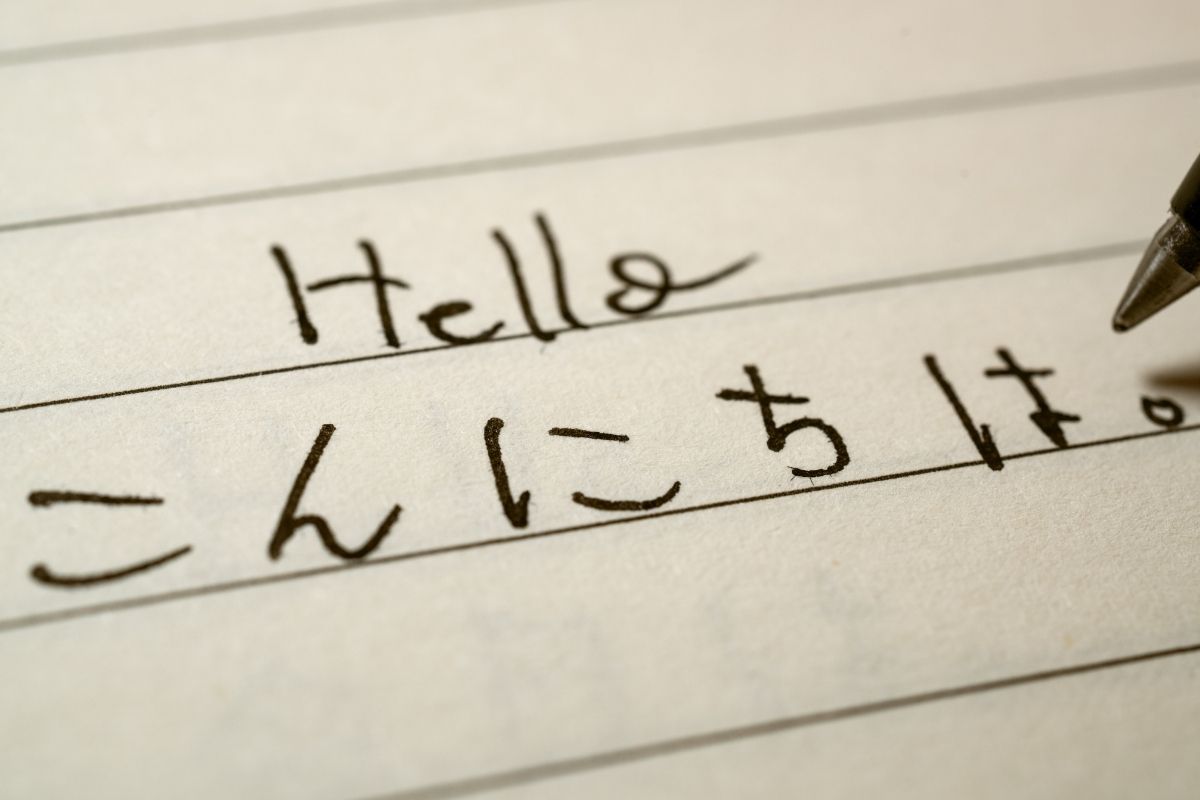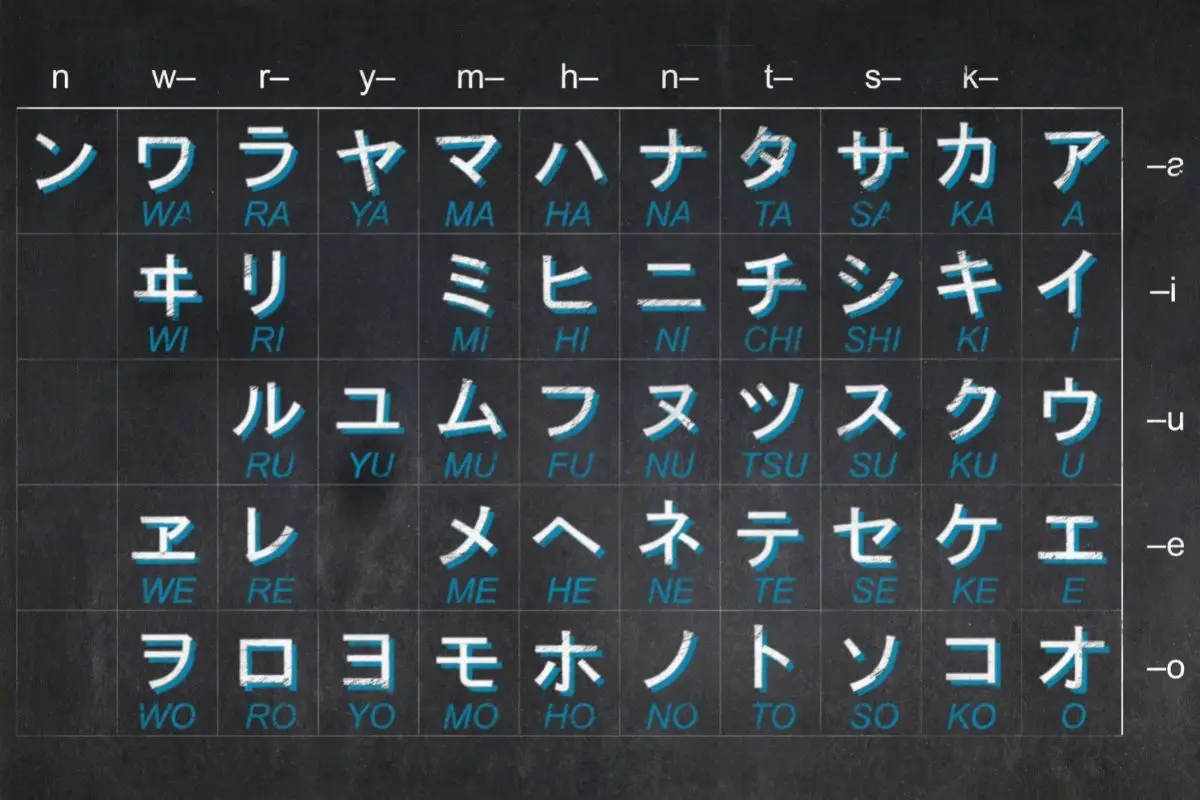Language learning is always a difficult experience. It is a goal that takes patience, diligence, and determination.
Some languages take hundreds of hours to learn to speak in them fluently and even then, regional slang can throw you off.

Hundreds of hours may seem like a Goliath task, but that is only the amount of time it takes to learn the easy languages compared to English, like French or Spanish.
One of the hardest languages for an English speaker to learn is Japanese (see also ‘Is Japanese A Tonal Language?‘).
If we compare it to our native English, its grammar rules, counting systems, use of connective particles, verb reversals, agglutinative verb conjugations – among other things – all seem alien and strange to the way we have learned language.
It is considered so difficult to English speakers, that it is considered one of the most difficult languages in the world to learn, taking upwards of 2000 hours to study along with Chinese and Arabic.
This may make potential language learners wonder what is the best way to learn Japanese and how to maximize their efforts.
Luckily, Japanese is a language with a mountain of resources, thanks to the vast media output from Japan.
Books, manga, music, podcasts, and many more resources flow from Japan in a steady stream, however its most popular form of entertainment is anime (see also ‘How Popular Is Anime In Japan?‘).
However, is anime a good resource to learn Japanese? Can you learn Japanese just from watching anime (see also ‘Best Romance Anime Movies’)? In this article, we will take a closer look at anime and see just how good it is for learning one of the world’s most complex languages.
So, Is It Possible To Learn Japanese From Anime?
In not so many words: No.
This is not to discourage language learners, anime fans, or lovers of Japanese culture, but you can not learn Japanese solely from anime.
This isn’t limited to Japanese, this is a worldwide phenomenon. If you watched Swedish detective dramas, Korean manhwas, or French comedies, you would not be able to learn Swedish, Korean, or French.
This does not mean that you cannot use anime or TV as a resource, in fact it is one of the best resources for learning a language, but it needs to be applied to your learning level in that language.
Let’s take Japanese as an example, Japanese has five levels of fluency in the language: N1, N2, N3, N4, and N5. N5 is an absolute beginner, N3 is considered fairly fluent and knowledgeable about common Japanese, and N1 is basically having a native level fluency in Japanese.
Using anime as a resource becomes useful around N4, when you are not too fluent but fluent enough to understand most of what is being said and to be able to convey what you want to say.
The reason is to learn from anime or at least practice Japanese using anime, you need a basic knowledge of the words that are being said, a secure foundation of understanding about Japanese’s grammar rules to apply them immediately, and additional resources around you to help you decipher something you may not know.
As an absolute beginner at N5, you will not have any of these. The meanings of the words and the nuance of the grammar will be lost on you and, at best, you will have a few new words that you may or may not be able to use.
Even if you power through and learn some things from anime, it may well be wrong in the context of vernacular Japanese.
Characters in anime are given unique characterizations to make them stand out and speak in ways that normal Japanese people would never hear on the street.
This characterization continues over into the worlds of anime, as many places are different from one another.
For example, One Piece is set in a pirate world with the language to match.
A lot of the words you would hear in One Piece would not be heard in the anime Komi-san can’t communicate, an anime about a high school girl who struggles to talk.
The language you would learn would be limited and not very useful to understanding the language in Komi-san or modern Japan, as it is not used in everyday life or is used in a different context.
Pros Of Using Anime As A Learning Resource
Nonetheless, you should throw your subscription to Crunchyroll in the bin just yet. Anime is still a great learning resource, it just shouldn’t be the foundation of your language learning.
Anime should be a secondary resource that you turn to practice what you have learned of Japanese and keep that knowledge fresh. With that said, here are some reasons why anime is a good learning resource:
Listening Practice
One thing that language learners really struggle with is listening. Reading and writing can be taken slowly, but listening is at the moment, and you have to unpack what someone said in a matter of seconds without panicking.
Since anime can be paused, rewound, and watched time and again, it is a great way to practice your listening skills and see if you can catch what someone is saying without putting on subtitles.
Understanding Of Decorum And Speech Patterns

Each culture has a way of speaking and doing things that is considered polite and proper. Politeness is integral to understanding Japanese, and there is even a form of polite speech in Japanese called ‘Keigo’.
There are varying levels of Keigo for different people and situations, and watching anime can help you understand this.
For example, if I worked in a school, I would refer to my fellow teachers with the suffix ‘-san’ at the end of their name, showing my near equal level with them.
But if I was talking to the vice principal (or ‘kyoto’), I would refer to them as ‘-sama’, showing them respect and acknowledging their higher status.
While keigo is a very formal example of speech in Japanese, there are many such styles of speech that could trip you up.
Watching interactions between characters in anime may help you understand when to be formal and when to be familiar with someone.
Boosting Confidence
This may seem like an odd one, but language learning is a long and difficult process where often you will find yourself wanting to give up or not recognizing your own progress.
Anime can help with that. If you can understand and engage with anime in solely Japanese better than you could before, you can see your own progression, and it will boost your confidence in the language.
This will help you keep learning and keep climbing the language learning mountain right to the top.
Other Good Learning Resources For Learning Japanese
If you want to learn Japanese and the only way you can think of going about it is using anime and a Japanese dictionary, then I am here to tell you that there is so much more you could be doing.
Japanese is the 9th most spoken language in the world with over 126 million speakers, so there are so many resources to choose from.
First are the books. If you speak to a teacher in Japan or a Japanese person, they will recommend ‘Minna no Nihongo’ or ‘Japanese for everyone’.
This book teaches you Japanese from the ground up, starting with solely Keigo and working towards more natural speech. The problem with this book is it is all in simple Japanese with no direct English translations.
It is designed, so a teacher can sit with the student and show them what it means. If you can get a Japanese teacher, this would be a good book, but if not, then maybe give it a miss.
Books that have English translations for people to use are ‘Japanese for busy people’ and ‘Japanese from zero’.
These books are written in English and ease you gently into learning Japanese, however I would recommend ‘Japanese for busy people’, as it is more concise and gives you more information.
If you were looking for a Japanese teacher to help you, I would recommend Italki or Preply. They are online learning platforms full of language teachers.
You don’t need to book blocks, you just book the session for that day and pay for it. They have professional teachers and community teachers with prices that are not unreasonable as well.
Teachers and books with audio CDs are a good foundation for language learning, but there are other techniques that you can use alongside them to make yourself fluent.
One of the best ones is using shadowing techniques. Shadowing is when you listen to audio or speech in the language you are choosing to learn.
Then, you try to repeat what you just heard as quickly as possible and comprehend it. The repetition is meant to stick the language in your brain and aid you in understanding others.
You can do this with TV shows, anime, podcasts, anything with audio really, however nowadays, there are specific shadowing books with audio CDs in them.
The books have the translations in them for you to look it up while you are listening. What’s better is these books tend to be pocket sized, so you can take them anywhere, while listening and learning.
There are many more tricks and tips for language learning, but these are some of the best ways that I know of, and I hope that they help you in your endeavors.
Final Thoughts
Japanese is a hard language to learn and because of anime’s popularity, people are desperate to learn it. However, while anime is a good learning resource, it cannot be used as a foundation for learning the language.
This upsets people and causes them to lose confidence in learning Japanese, abandoning it before they can make headway.
To this, I say: Don’t lose hope! Japanese is a wonderful, beautiful language and if you use the right resources and anime in the right way, you can learn it.
It will just take time and commitment, but once you make progress, it is something you probably won’t give up.









